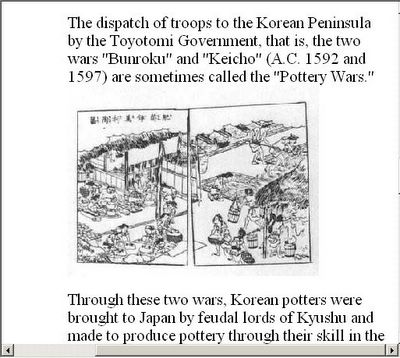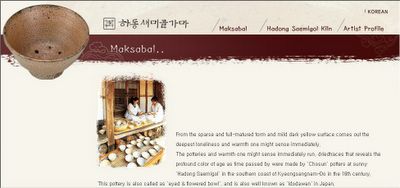
The dispatch of troops to the Korean Peninsula by the Toyotomi Government, that is, the two wars "Bunroku" and "Keicho" (A.C. 1592 and 1597) are sometimes called the "Pottery Wars."
Through these two wars, Korean potters were brought to Japan by feudal lords of Kyushu and made to produce pottery through their skill in the lords' own fiefs. Due to this, Japan made great progress in pottery production. Korean techniques are roughly classified into "kickwheel" and "climbing kiln."
Tools for the potter's wheel
Various painting tools including a pair of compasses
In those days Japan had merely simple wheels to turn by hand. The kickwheel has another slab below the shaft of the revolving wheelslab. The potter can revolve the upper wheelslab by kicking the lower slab with his foot. For this, the potter can constantly use his both hands while freely revolving the wheel with his foot at the speed he desires. As a result, mass-production became possible.
The climbing kiln consists of a series of small chambers constructed on a hillside. The potter throws firewood into each chamber one after another from the lower level upward through the fire port on each side. Until that time, kilns used in Japan were "single-chamber celler kiln," which were built on a hillside by boring a hole through it. Introduction of this climbing kiln was an epoch-making event, resulting in preventing much waste of labor and firewood. Karatsu-ware, Ueno-ware, Takatori-ware, Satsuma-ware of Kyushu, and Hagi-ware of Honshu ware quick to adopt this climbing kiln.
In 1616, Risampei, a Korean potter, discovered porcelain stone in the Arita area (present Arita City of Kyushu) and made porcelain for the first time. This is called "Old-Imari-ware" and, based on this, a gorgeous color painting world was created, such as "Somenishiki-Imari-ware," "Kakiemon-ware, "Nabeshima-ware," etc.
When we thus look on the history of Japanese pottery, the role played by potters who came to Japan from Korea was very great and they added porcelain to the history of pottery.
(Click on above photo for source)
Want to post comments? Write me: Togeika@gmail.com






